Located just across the White River from the central hub of downtown Indianapolis, Indy Convergence has made a comfortable home for itself serving the residents of Indianapolis’s Near Westside. Founded in 2007, the company is centered around its flagship artist residency, Convergence, aimed at providing creatives the agency and time needed to fully explore free expression through rehearsals and workshops. The other main branch of Indy Convergence’s work centers around community-focused programming, allowing local residents to find support for their ideas, dreams, and artistic projects.
One highlight of their community programs is A Rising Tide, which works alongside other Indianapolis-area efforts to revitalize the White River area. Indy Convergence owns two outdoor stages, including one that can float on the river itself, which come in handy as their building is currently under renovations. Previous efforts have included the Near West Storytelling Project, where participants crafted stories that were then shared with the community, and Near West Art Walks that celebrated neighborhood artists and nonprofits. We spoke recently via email with producing artistic director Robert Negron.
AMERICAN THEATRE: Who founded Indy Convergence, when, and why?
ROBERT NEGRON: Indy Convergence was founded in 2007 by myself (an actor), Caitlin Negron (a dancer), and Dara Weinberg (a poet and director). All three of us were working at the Oregon Shakespeare Festival and in the relatively early stages of our careers. As with most rotating repertory contracts, we found ourselves with a large amount of free time toward the end of the season and began filling that time by working on personal passion projects, sharing entry-level workshops with each other based on our other talents and interests, and coming together to try out ideas that we weren’t sure would work. What naturally emerged was a process-driven environment that provided us with an opportunity to learn and grow without fear of failure.
As the season came to a close, and we were bemoaning the end to the work we had been doing together, we began discussing the idea of setting aside time once a year to intentionally create a similar environment. We all had connections to Indianapolis, which made it an ideal location for us to meet, and designed a program that provided the time, support, and resources for ourselves and others to refine ideas, create new work, and push outside our comfort zones in an open lab setting.
Over the years, Indianapolis became home, and the program grew in frequency and number of participants into what is now our annual artists residency. The residency and the principles it was founded on became the cornerstone Indy Convergence was built around, informing our mission, values, and community engagement models. Even though our company has since expanded to produce, present, and support a large array of artistic programs and engagements, all our work remains collaborative, community-conscious, interdisciplinary, and process-driven.
Tell me a little bit more about yourself and your background.
I grew up in San Diego and come from a small but tight-knit family. I was very close with my grandparents, and it was my grandmother who made the arts part of my life from a very early age. My mother raised me and my brother on her own, and, as any kid from a single-parent home knows, after-school programs and summer camps are an essential and formative part of childhood. I was so fortunate to have benefited from the many programs the museums and arts organizations in Balboa Park offered me growing up.
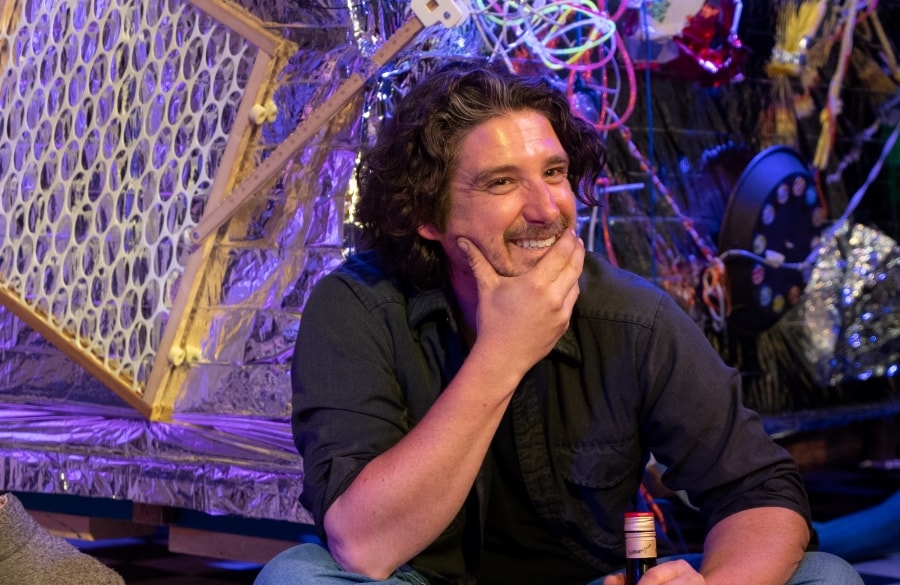
I attended an arts magnet in high school that allowed me a great deal of freedom to select core classes that approached learning from a creative perspective, all of which instilled in me a deep joy and curiosity for learning and a fearlessness to try something new.
I began my career as an actor, which is what brought me to the Oregon Shakespeare Festival, where our company was first envisioned. But looking back it was always the process of creating work that drew me to the theatre.
In 2008, I reconnected with a friend from high school who was working as a music teacher in Jacmel, Haiti. She invited me out to visit and meet the amazing artists she was working with. It was there that I grew to understand the true importance of artists in any community. It is also where I experienced firsthand the debilitating effect that “toxic charity,” unchecked assumptions, and surface-level community engagement can have on a community. That visit turned into 10 years of collaboration with artists I met while living and working in Haiti. Those lessons and experiences in Haiti are what shaped our company’s local engagement strategy of moving at the speed of community, forming relationships of mutual mentorship, avoiding “giver-receiver” relationships, and just listening…and then listening some more.
What sets Indy Convergence apart from other companies in your region?
What sets Indy Convergence apart in general is that we don’t define success by finished work or a polished performance. Instead, the purpose of our engagements is to provide artists with a cross-disciplinary collaborative environment where the audience is simply the last tool or lens that aids the artists in their process. This approach invites the audience to engage with the same questions that the artists themselves are exploring and share in the small, crucial moments of discovery that will eventually inform the artists’ final work. One of the things that I love most in my role as an artistic director is supporting each artist during those little “a-ha” moments that lead them somewhere unexpected and, over the years, we’ve cultivated an audience that understands and relishes the process and those moments as much as we do.
Our community development model also sets us apart from other organizations and is deeply embedded in the way we operate. Living in the community we serve is an essential part of our community engagement strategy. We work collaboratively on resident-led initiatives, and when we decide to engage in a project, it’s because the project has been brought forth by the community and we are being invited to participate. For example, we don’t write grants and then shop for support; instead we put our support behind existing ideas and leverage our resources to further those projects. Our work involves listening first. In fact, when we moved to our neighborhood in 2016, we set aside an entire year of listening before even considering community engagement projects. It’s a “don’t just do something, sit there!” mentality and it allowed the time and space to build authentic relationships free of motive or agenda.
Trust developed that we weren’t there to do anything specific, simply to understand how our company’s resources might be of most use. By the end of that year, I couldn’t attend a meeting without someone sharing an idea with me, and those ideas have informed over seven years of work.
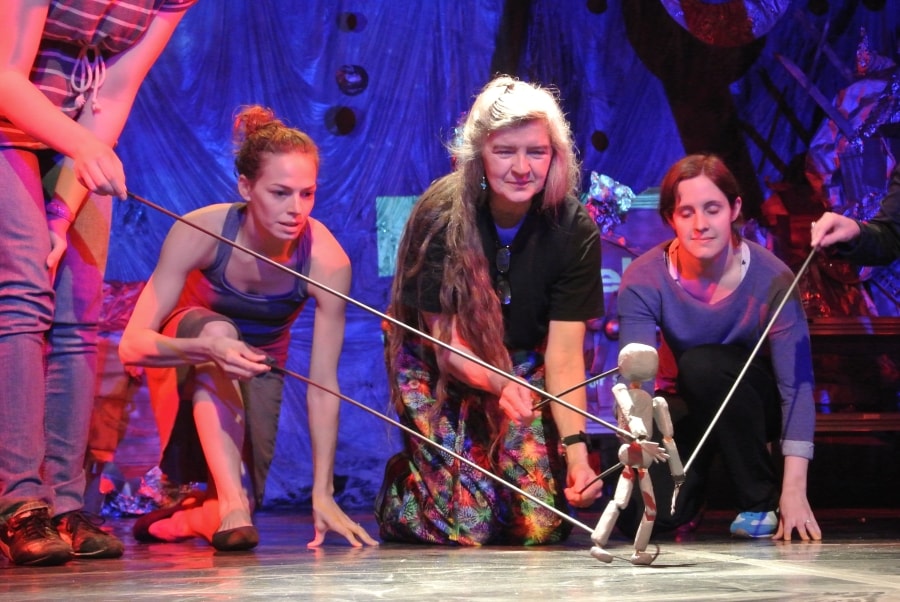
Tell me about your favorite theatre institution other than your own, and why you admire it.
That’s a hard one, but I’d have to say the Rubicon Theatre Company in Ventura, Calif. I had the pleasure of working at the Rubicon back in 2006. Although I’ve worked in regional theatres for most of my life, there is something special about their company culture that I have come to appreciate ever more fully since assuming a leadership role. During my time there, I don’t think there was a single person working in that building who didn’t find a moment to genuinely engage with me. As a young actor, I felt seen and valued from the moment our first rehearsal began.
We all strive to build genuine and supportive environments within our organizations, not just because it makes our workplace better but because it makes for better work. The Rubicon is proof of that. The mentorship culture and effortless camaraderie that was modeled there for me is an example that I continue to carry with me more than 20 years later.
How do you pick the shows you put on your stage? How do you choose the projects you work on and the artists you work with?
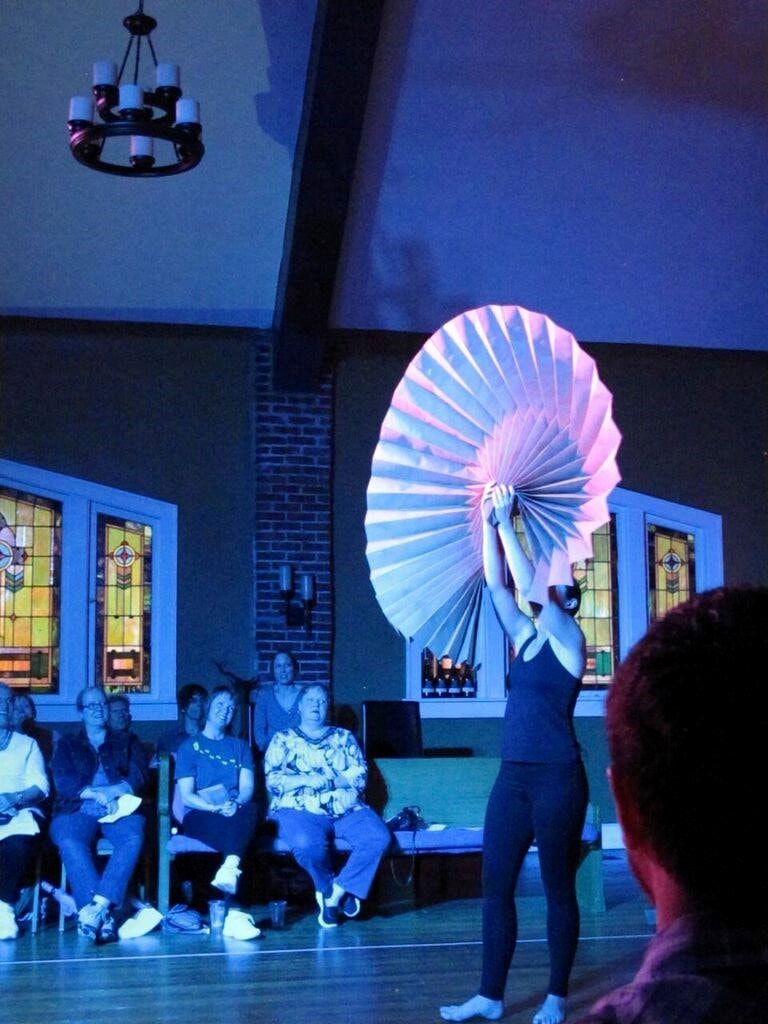
We take an agile approach to season planning, designating somewhat broad program slots that allow us to plan while remaining adaptive and reserving capacity to support community projects when called upon. I always know that we will have a residency in the spring and outdoor programming in the summer on our all-terrain and floating stage. We offer each of the Near West’s four neighborhoods free support for one event each year, and I never know exactly what those events will look like until the request is made. We also maintain 2-3 hyper-responsive slots that allow us to engage with unexpected opportunities or to examine emerging issues that impact our communities in real time.
At any given time, I have 20-30 pet ideas floating above my head like little light bulbs. I’m constantly cataloging disparate resources and assets. They all kind of organize themselves like little wires. When the right elements coalesce at the right time, one of those light bulbs will switch on and I know it’s time to take it down and consider working on it.
When selecting the right group of artists for a particular project, I look for differing backgrounds, disciplines, perspectives, and demographics. I seek out artists who are curious or passionate about the project but may approach it very differently.
What’s your annual budget, and how many artists do you employ each season?
Before Covid, our annual budget was $250,000 and growing, and we employed anywhere from 20-80 artists each season. Everything since Covid has been an exercise in responsive producing, balancing our programs and resources with the shifting nonprofit funding landscape and economic trends. We are committed to compensating our artists at or above market rate, which has meant thinking creatively about how we program and has led us to cultivate deeper partnerships with other organizations that are facing similar challenges.
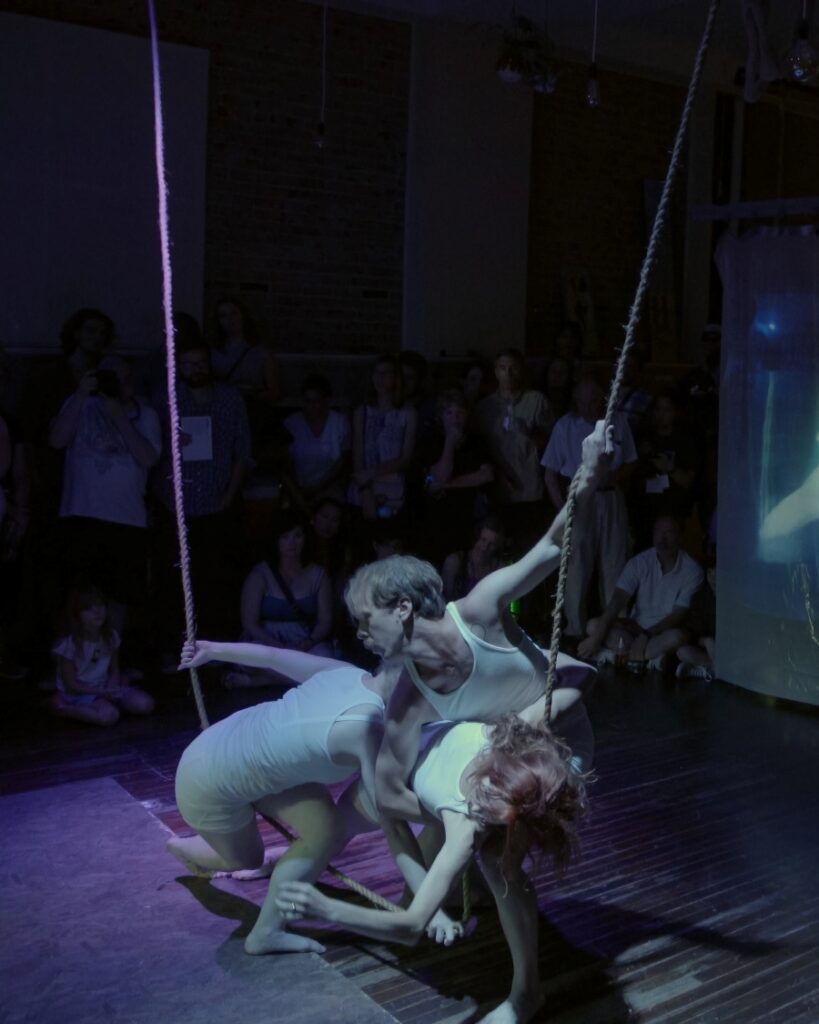
How has Indy Convergence fared since the end of the Covid lockdown?
It hasn’t been easy. During the pandemic, we began a renovation project to update our historic 1915 building and increase its accessibility, which required closing our arts space for a few months during construction. The timing seemed opportune since we couldn’t safely produce indoors back then, but, unfortunately, a slew of pandemic-related construction delays have kept it closed for going on three years now. We’ve received a great deal of support from local foundations to help us shoulder the longer timetable and associated expenses, but having our main performance space closed has been very hard.
Fortunately, well before the pandemic, outdoor and site-specific programs were a large part of our season. Our A Rising Tide series offers intimate performances in unexpected locations along the city’s White River, which meant we already had equipment that allowed us to keep going, like outdoor-rated lighting, a floating stage, and a mobile all-terrain stage. Of course, we miss having our flex space as both a place to produce work and to gather with our community. We look forward to completing the construction project and reopening later this year.
How has your organization responded to calls for racial justice and more equitable working conditions that have arisen with new urgency in the past few years?
That’s a well-framed question. Suffice to say, while the urgency for racial justice that has taken place in the last few years may be experienced by some as new, the conditions that necessitated those calls are not. Before this shift, racial justice wasn’t openly discussed in most of the spaces we worked in where dominant culture prevailed, which required spending an undesirable amount of our time and resources explaining something that was not being seen in order to justify our strategies and projects.
The last few years have moved the needle in an overall positive ,direction but they’ve also changed the landscape in unexpected and complex ways. It is the responsibility of every leader and organization to maintain a mindset of self-evaluation and uncompromising objectivity, but having now tipped into an environment where virtue signaling blows so much hot air, our principal response has been to quietly unfurl our sails and let our actions speak for themselves.
Our community in the Near Westside of Indianapolis is one of the most evenly racially diverse populations in the city: roughly one third white, one third Black, and one third Hispanic/Latine. One of the many ways we support our racially diverse community is by offering institutional resources to resident-led initiatives and developing those projects with a built-in obsolescence model. In other words, we work on existing resident projects so the initiative is sustained long after and beyond our involvement, eventually making our participation non-essential. We commit to people-centered projects that revitalize our diverse community without displacement, are firmly rooted in resident culture, amplify existing resident work, prioritize incremental growth, and avoid destabilizing alliances.
Geographically, the Near Westside is separated from the city center by the White River. To understand how deeply this divides our community in more ways than one, crossing the river into the Near Westside doubles the number of people of color while cutting life expectancy and household income in half. It’s a sobering statistic. But the river also ties us together and is a metaphor for the value of human life and the history of the people who live here. It’s a connecting tissue of faith, a natural life-giving asset, and a source for industry. Over the last five years, we’ve continued to develop our A Rising Tide program that supports community led revitalization efforts along the river by restoring existing access trails, providing educational hikes, clearing invasive species, and offering mobile non-invasive riverside performances on floating and all-terrain stages, all of which create opportunities for our neighborhoods to come together in highlighting, celebrating, and reclaiming the river as a vital asset.
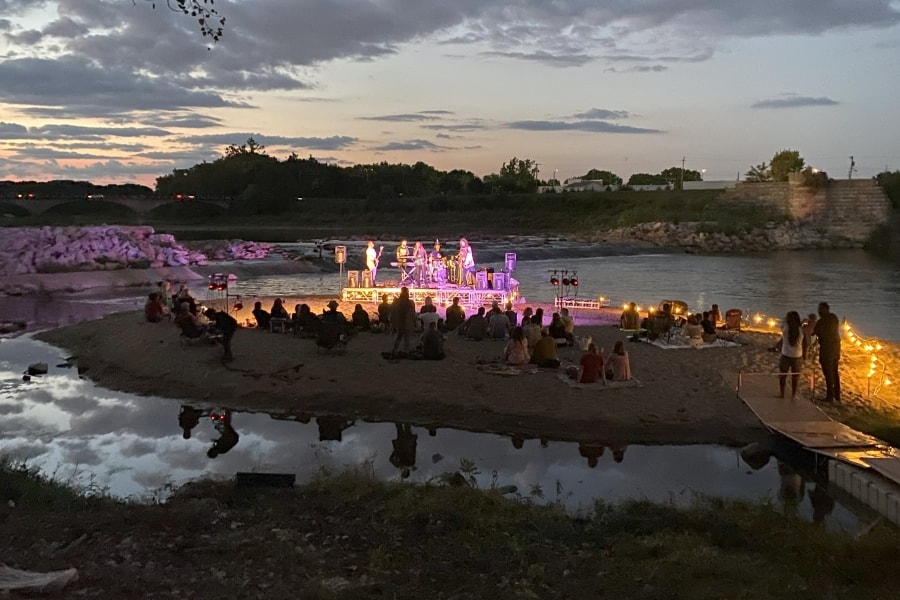
What show are you working on now? Anything else in your season/upcoming year you’re especially looking forward to?
I always look forward to our A Rising Tide series but am especially excited about this year’s program. We’ve recently formed deeper partnerships with a number of organizations working in alignment with our values, and, with a deeper level of collaboration, our pooled resources will help us achieve production values that none of us could have on our own. I’m eager to see the results of these thoughtful partnerships.
What’s the strangest or funniest thing you’ve ever seen or put on your stage?
That would have to be a tie! The first is an operetta created by Ellen Denham during one of our residencies. It was an adaptation of Peter, Peter, Pumpkin Eater in which the character of “Wife” wore a pumpkin-shaped chastity belt. The piece itself was poignant, so strange and funny in all the right ways, but I will never forget the hilarity of fitting the performer for a pumpkin-shaped chastity belt built out of a basketball!
The second would be a walking art gallery that was used as a transition device during our residency’s open lab to usher audience members to short performances happening in different outdoor locations. The idea was that canvases would be handed to performers from a moving trailer, and the performers would hold them until the audience had passed by and then run back to the front to trade them for another. It was an unticketed event and attendance was much higher than anticipated, which resulted in a far longer relay distance than anyone was prepared for as the audience stretched itself out to travel along the sidewalk on a hot August day.
What are you doing when you’re not doing theatre?
Spending time with my wife and our two kiddos, ages 1.5 and 4. Our venue is a two-story mixed-use building, and we live in the upstairs apartment. I enjoy spending time in my woodshop tinkering on projects for friends and family. Is obsessively listening to podcasts and audiobooks considered a hobby? Either way, I do a lot of it.
What does theatre—not just your theatre, but the American or world theatre—look like in, say, 20 years?
Yikes! I think the last 200 years would indicate that it will be fundamentally the same. Simply creatives sharing stories that are incorporated into our understanding of the world and the way we live in it together. I know artists will always need the space, the time, and the resources to do that well, but we have proven ourselves to be really bad at predicting the things that shape our world most deeply. It’s not that I do not deeply consider this question as a theatre professional; we cannot create what we cannot imagine. I could write pages here, but the last sentences would still be some iteration of, “But we cannot predict black swan events” and “Where’s my flying car!?”


